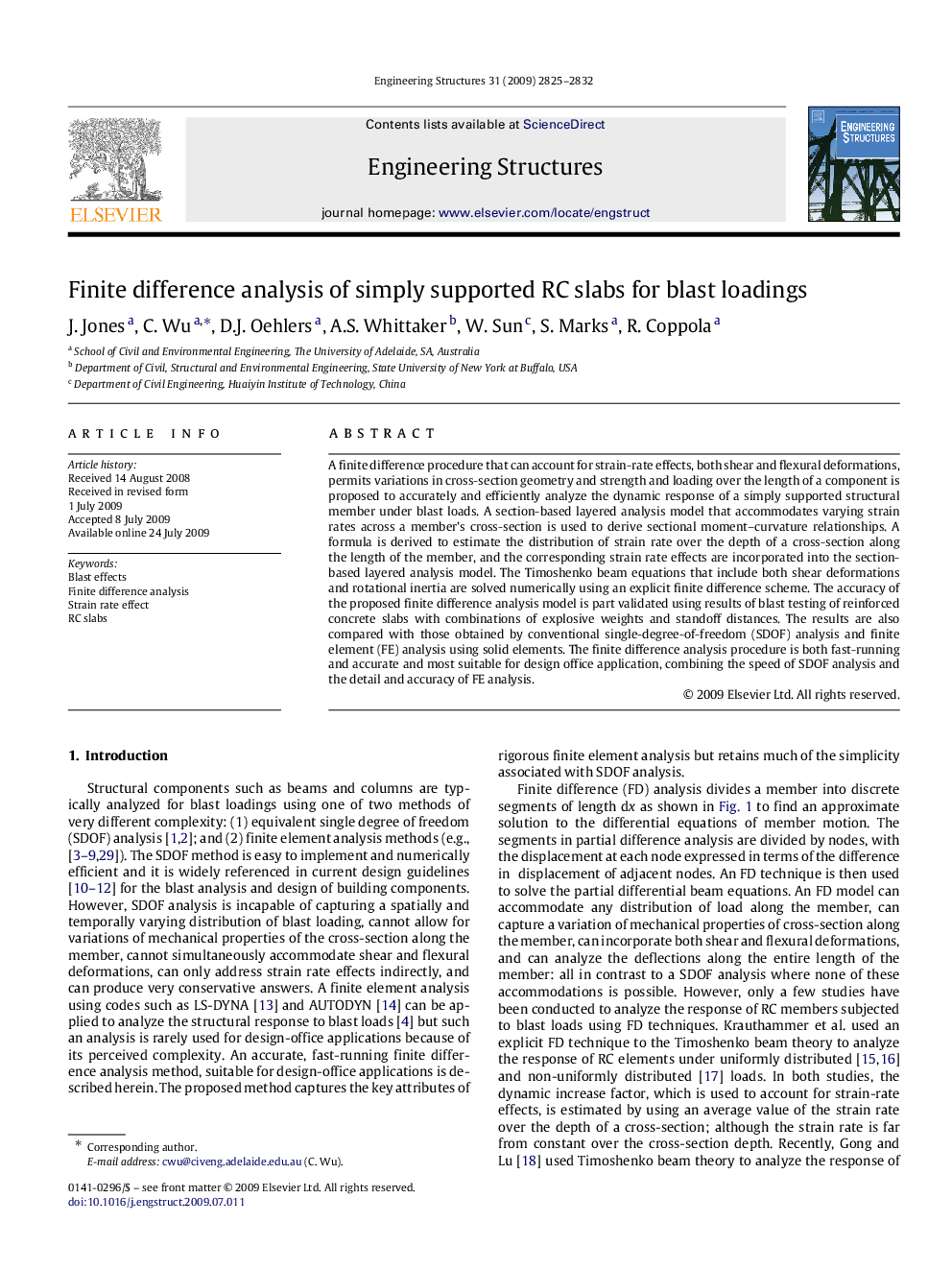| Article ID | Journal | Published Year | Pages | File Type |
|---|---|---|---|---|
| 268337 | Engineering Structures | 2009 | 8 Pages |
A finite difference procedure that can account for strain-rate effects, both shear and flexural deformations, permits variations in cross-section geometry and strength and loading over the length of a component is proposed to accurately and efficiently analyze the dynamic response of a simply supported structural member under blast loads. A section-based layered analysis model that accommodates varying strain rates across a member’s cross-section is used to derive sectional moment–curvature relationships. A formula is derived to estimate the distribution of strain rate over the depth of a cross-section along the length of the member, and the corresponding strain rate effects are incorporated into the section-based layered analysis model. The Timoshenko beam equations that include both shear deformations and rotational inertia are solved numerically using an explicit finite difference scheme. The accuracy of the proposed finite difference analysis model is part validated using results of blast testing of reinforced concrete slabs with combinations of explosive weights and standoff distances. The results are also compared with those obtained by conventional single-degree-of-freedom (SDOF) analysis and finite element (FE) analysis using solid elements. The finite difference analysis procedure is both fast-running and accurate and most suitable for design office application, combining the speed of SDOF analysis and the detail and accuracy of FE analysis.
